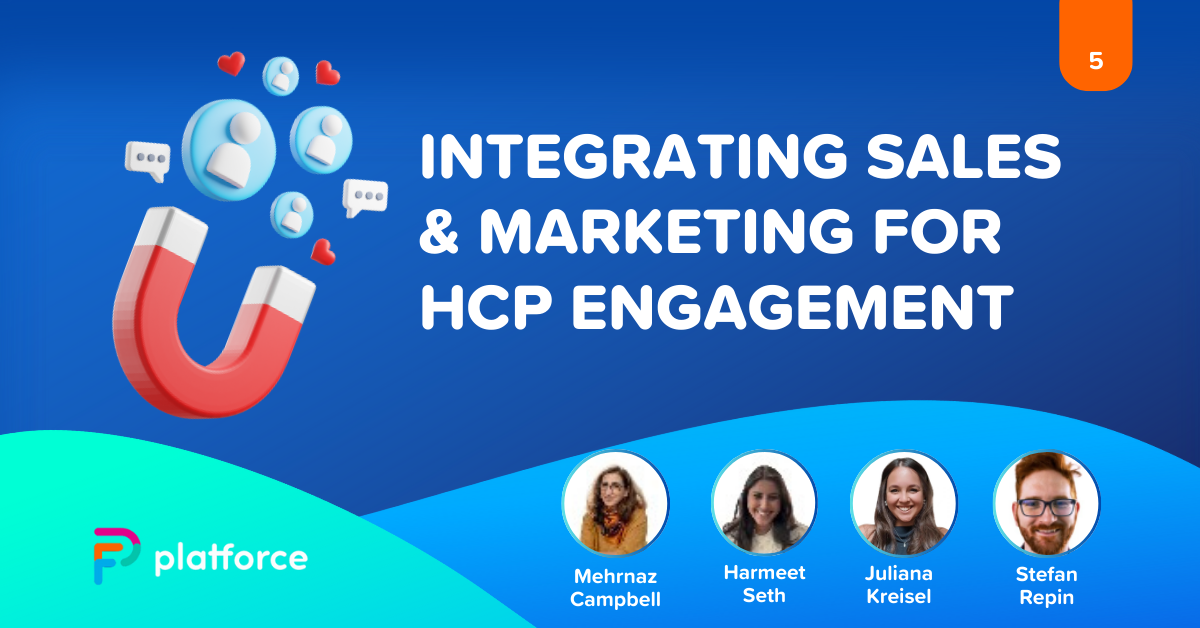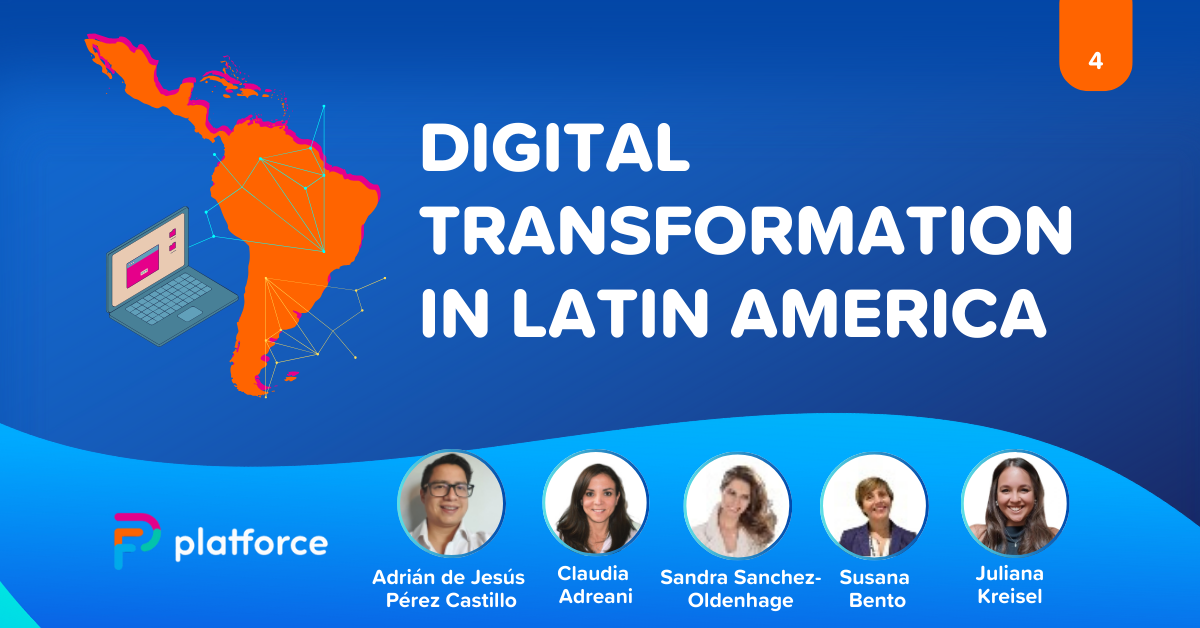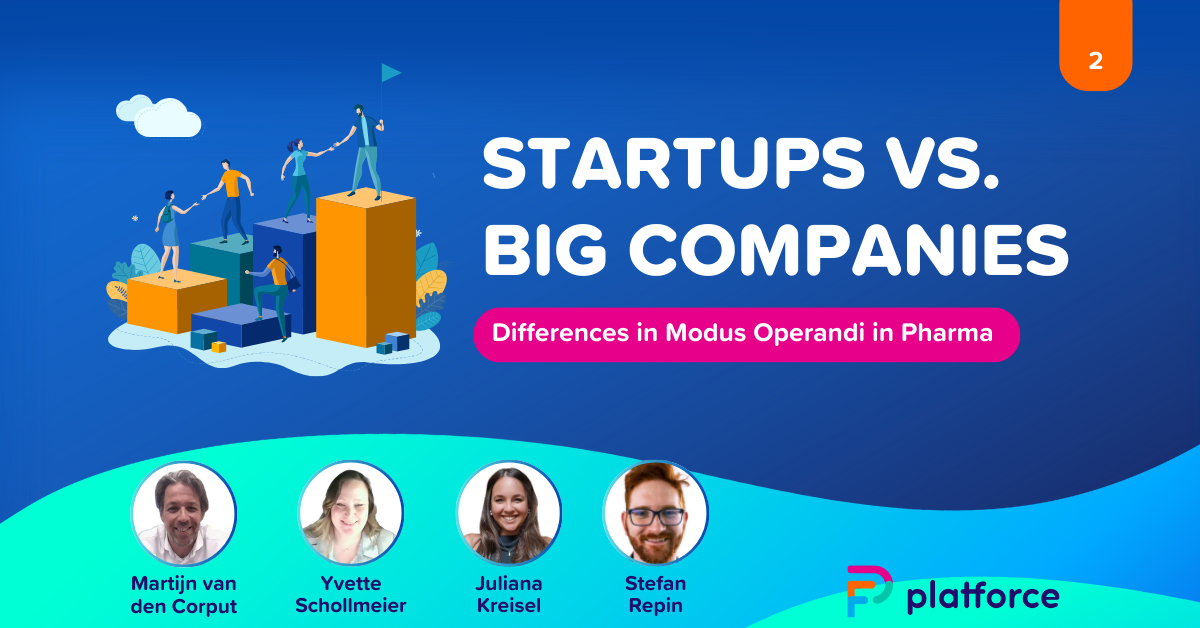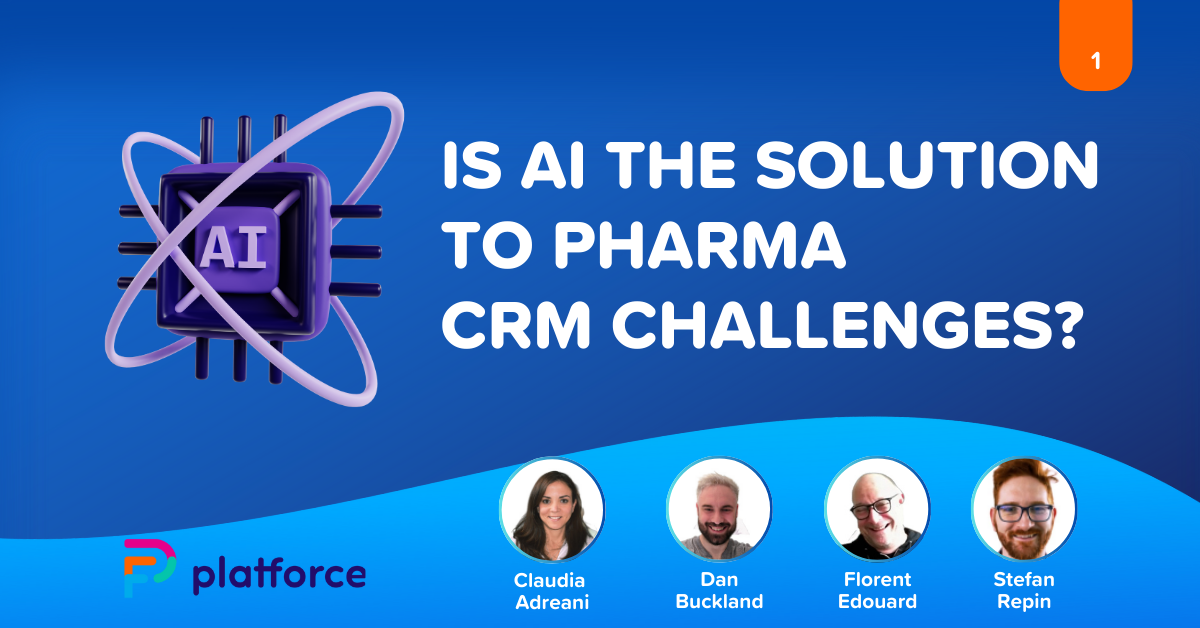Pharma conferences are more than just professional gatherings; they allow companies to network, create business opportunities, learn new information, and stay ahead in the industry. However, these pharmaceutical events require commitments and consume time and money. Hence, one must actively participate to yield substantial results from investments.
As a regular participant or a first-timer, there are different strategies pharmaceutical and life science companies can use to get the full benefits of these conferences. It involves defining your goals before the conference and engaging other attendees using various means.
Additionally, it is essential to follow up on new contacts in person and remotely using Platforce CRM software to ensure long-term relationships after the conference. This article will explore creative strategies to help you leverage the potential of pharma conferences in the best manner and give tips on tracking the outcomes of your marketing efforts in the healthcare system.
Table of Contents
- How to prepare for pharmaceutical sciences conferences in 2025
- How can a pharma team participate actively during conferences?
- How does a pharmaceutical company stay relevant after a conference in 2025
- Tracking outcomes of pharmaceutical and life sciences companies’ marketing efforts
- How a pharmaceutical company can maximize virtual conference engagement in 2025
- Final thoughts
How to Prepare for Pharmaceutical Sciences Conferences in 2025
Different pharmaceutical sciences fields, such as pharmacology, drug discovery, clinical research, and pharmaceutical marketing, organize conferences annually. It’s not every local and international conference a pharma industry should attend because not all will meet your needs.
The first step to maximize pharma conferences is to attend events that share the same values as your professional, scientific organization.
Before the d-day, it is essential to prepare adequately so everything goes smoothly. Have clear directions and set relevant objectives. Ask yourself some questions like:
- “Who do I want to network with?”
- “Which of my products or services do I want to market?”
- “How will I sell myself to others?”
The answers to your question will help define what you want to achieve.
Furthermore, ensure you plan financially, as attending this annual meeting can be costly. Make budgets for travel, accommodation, registration fees, and training of staff that will be present. The budget should also cover the cost of designing and printing promotional materials.
Pharmaceutical industries should make provisions for promotional materials such as business cards, brochures, and poster presentations. These materials should be detailed and easy to understand. Most leading solution providers also create a digital portfolio and make in-depth presentations for their companies. It will give an insight into what they do and their expertise in the drug discovery world.
How Can A Pharma Team Participate Actively During Conferences

There are different means by which professionals can actively participate during a pharma conference. The following are some ways to maximize your experience and make your company stand out:
Speed Networking Sessions
Some conferences organize speed networking as a way to expand professional contacts. Though speed networking may come in different formats, they have the same end goal. With speed networking, attendees connect with people with like minds quickly.
Because of the limited time, it is important to prepare to make the most of speed networking. Before engaging, know what you want to say to avoid information overload. Greet other pharma professionals with a firm handshake, and introduce yourself and your company. You can start with ‘Hello, my name is ……., I work with ……. company, and I would like to connect with you’.
Furthermore, ask questions to ensure the conversation is two-way. You can write down the questions beforehand to get enough information. Don’t forget to take notes and exchange business cards at the convention center.
Not everyone meeting during an annual meeting will be a potential client or a great connector. Hence, make speed networking sessions as brief as possible and move to the next person.
Engaging Social Media Strategies
Social media can serve as a platform for you to engage your followers and leading researchers during and after the pharma summit. There is no doubt that Twitter and LinkedIn are the best social media platforms for marketing. However, as a global pharma company, you can try other platforms and expand beyond these two.
When using social media platforms:
- Do not overshare and stick to valuable points.
- Use relevant hashtags and tag the organizers to broaden your brand’s visibility.
- You can also go live and share real-time updates to open discussion and engage your followers.
- Reach out to as many attendees as possible, ask them to follow you and like your posts
- You may also take pictures with other attendees and retweet their posts.
All these social media strategies will help the pharma industry connect to those with common interests.
Gamification: Turning Learning to Fun
Companies often pay for spaces and stands to showcase their products and services during an annual meeting. Pharma professionals show interest by visiting your stand and checking out your display. Talking at length about your brand might bore them, which makes it important to include games, challenges, and quizzes to make learning more fun.
You can group the participants and give them topics related to your company to brainstorm on. After that, ask questions and give rewards to winning teams.
Leading pharmaceutical companies also play quick-fire questions. This game involves two parties: a sales rep and an attendee. The sales rep has a limited time, mostly one minute, to ask questions, and the attendee answers immediately and vice versa.
You can ask questions like:
- ‘What is your job title?’
- ‘What three words describe you?’
- ‘What are your usual work hours?’
Asking these questions will enable both parties to know each other better.
Personalized Interactions: One-on-one Meetings
You can also create personalized content for your target audience to make them feel more valued. This is feasible when you can access the list of guests and all medical professionals. Here, you know those you want to meet and the exact message to pass across to sell yourself.
To do this,
- Conduct thorough research based on the guests’ lists and identify your target audience.
- Gather data on your target audience to understand them better
- Using this data, tailor content to suit each client’s needs
- Reach out in advance and schedule meetings to discuss medical affairs.
- During the meetings, pitch yourself in the best way possible.
- Follow up and maintain the relationship.
Attend Interactive Sessions
Focus on interactive sessions in conferences where you can engage other medical professionals actively. Some conferences organize panel discussions where experts explore particular topics. Participate actively in panel discussions when topics related to your company are the subject of the matter.
As pharmaceutical scientists, you should always ask questions during Q&A sessions. Also, give intelligent answers when keynote speakers throw questions to the audience.
Furthermore, don’t shy away from round tables and group discussions. Organizers in a strategic conference may divide attendees into smaller and more intimate groups in the convention center. People get to know each other, brainstorm on topics, and ask questions.
In this scenario, you can nominate yourself as the group leader to be actively involved. As the group leader, you will report your group’s findings to the larger audience. This way, you can sell yourself and your brand.
How Does A Pharmaceutical Company Stay Relevant After a Conference in 2025?

A pharma company has only completed 50% of the task after successfully attending the pharma summit, as a lot still needs to be done. It is important to follow up on industry-critical conversations to build stronger and long-lasting relationships. Here’s how a biopharmaceutical industry can leverage connections
- Sort out the business cards and contacts you collected.
- Prioritize those that are more relevant and valuable to your business.
- Send personalized messages explaining why you want to continue the conversation.
- Set up a meeting, which can be virtual or in person, for further conversation.
- During the meeting, tell them how your products and services can solve problems. Make your points concise.
- Express gratitude for the time spent and store the customer info on your CRM software.
- Stay active on social media and keep attending relevant conferences.
Tracking Outcomes of Pharmaceutical and Life Sciences Companies Marketing Efforts
Attending pharmaceutical sciences conferences is expensive, and it is important to make the most of it. The following are some ways a healthcare industry can check how well it maximizes pharma conferences
Review your Goals
Review your networking goals and objectives. Check how far you achieved each goal after the conference. This will give an insight as to how well you performed. For goals that were not met, analyze the reason that could have been behind them and work on it towards the next conference.
Personal Growth
Though the conference was mainly for marketing your brand, you should assess how it has driven your growth as an individual. Professional interactions can help sharpen your communication skills and increase your confidence.
Return on Investment
Measuring ROI using key performance indicators will give an insight into how profitable attending the pharma summit was. Compare your financial investments to the connections gained. It may also include business opportunities and collaborations.
Referrals and Recommendations
Referrals and recommendations tell you how well your new contacts are pleased with your services. This means that they understand what your pharmaceutical and biopharmaceutical industry do and trust you to deliver.
How A Pharmaceutical Company Can Maximize Virtual Conference Engagement in 2025

Attending virtual meetings is similar to physical conferences, and the difference is just the platform. There is this common belief that this digital innovation may not be effective in networking and meeting people. This is false, as virtual events may have enhanced networking features such as chat boxes, instant messaging, and live activity feeds.
The following are some ways one can maximize virtual conference engagement for easy market access
- Like physical meetings, plan when attending virtual conferences and participate actively in relevant discussions.
- Make use of the conference app if available. Go through the profiles of attendees and reach out to like-minded healthcare professionals. However, you may not find enough information, as data privacy in healthcare is a major concern in health systems.
- Share updates on social media and participate in interactive sessions.
- Join group chats and discussions to get to know other participants better.
- Use CRM software to follow up with these professionals for a long-lasting relationship efficiently.
Final Thoughts
A pharma conference provides a medium where like-minded professionals can network, interact, and share ideas. Without proper planning, you may not have an amazing conference experience.
Before attending any pharmaceutical science conference, for example; research and development or drug delivery and drug discovery, it is important for healthcare professionals to write the networking goals they want to achieve and have strategic plans to achieve them. Since many of these conferences involve sharing and exploring data, it’s a plus to have reliable data-cleaning software that would preserve the genuity of your results
Furthermore, proper engagement is not limited to physical interactions, as the pharma industry can also attend conferences virtually. With our CRM software, companies can retain connections with healthcare professionals easily for business development.
Stay ahead of your competitors by following our Youtube and LinkedIn channels.
















